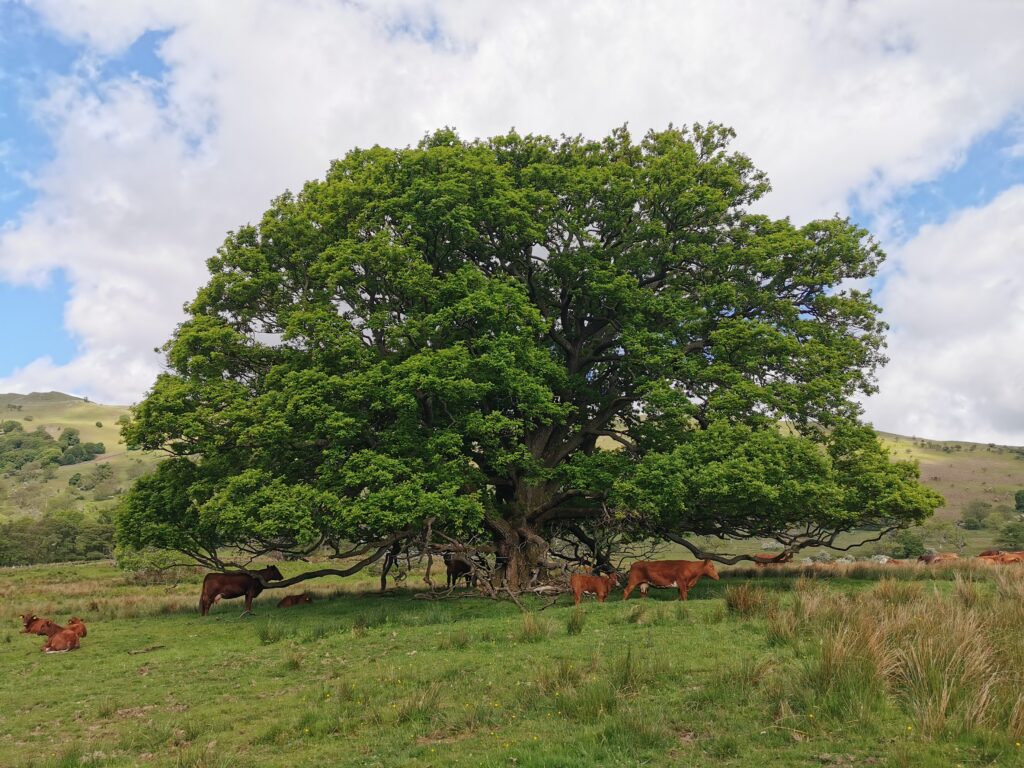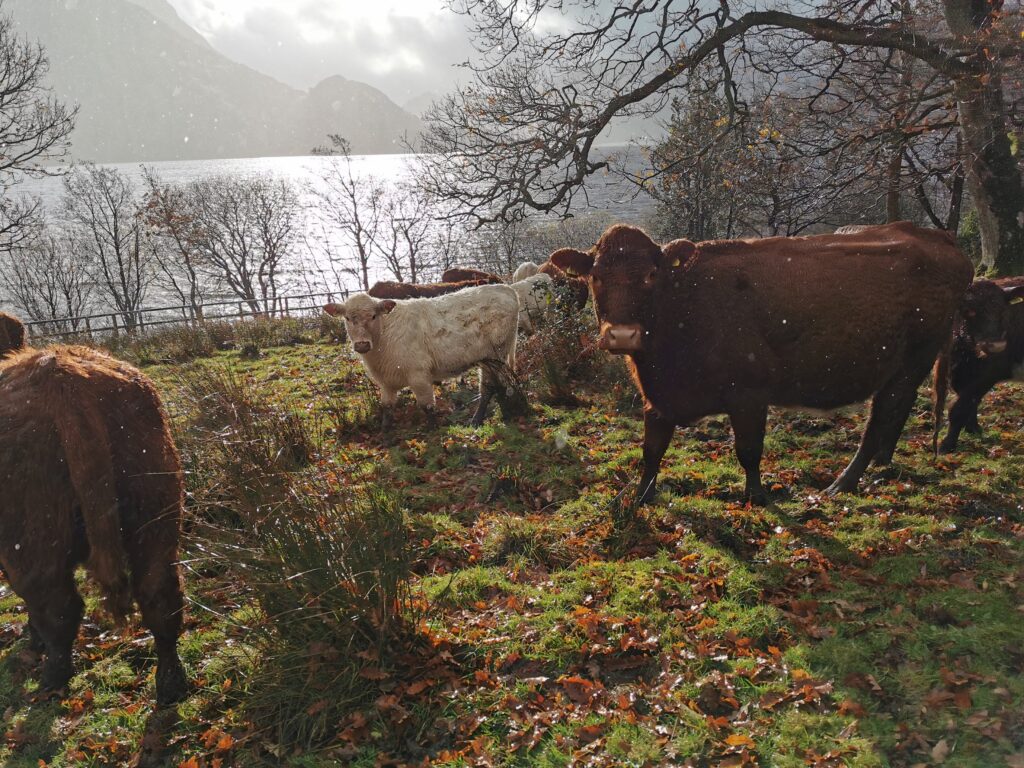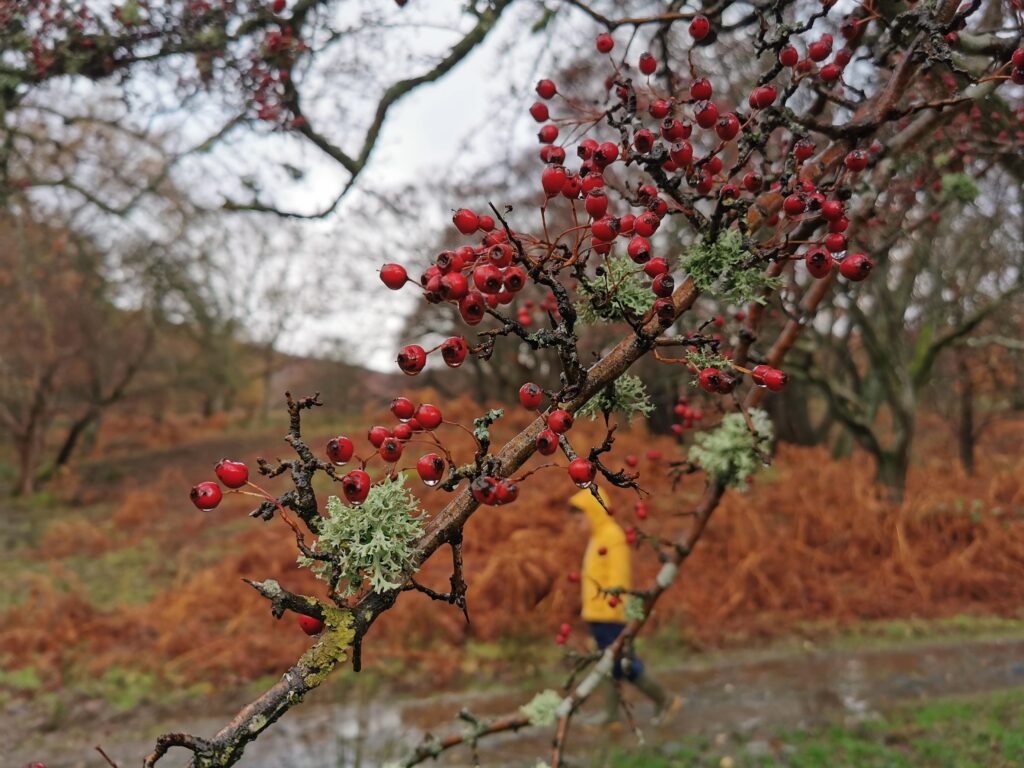Set back from the road that hugs the shore of Ullswater, Glencoyne Farm sits encircled by looming fells. When I visited in June, the hay meadows that flank the track towards the 17th Century Farmhouse were taking on their summer colours, while swallows zipped in and out of the huddle of stone barns. The dramatic rocky hills above were softened by woodland clothing the lower slopes, which were noisy with cuckoos, woodpeckers, warblers and flycatchers. According to my book of Lake District place names, Glencoyne means either ‘the reedy valley’ or ‘beautiful valley’. It’s not that reedy anymore, but it’s certainly beautiful.

Owned by the National Trust, Glencoyne Farm has been looked after by Sam and Candida Hodgson since 1995. At 1,258 hectares, it is one of the Trust’s largest hill farms. Being so huge, and containing a range of different habitats, Sam and Can employ many different farming and conservation techniques to ensure that it provides for both people and nature, as it has done for centuries.
Cows and trees
The section of the Ullswater Way that runs between Aira Force and Glenridding passes through Glencoyne Farm. Walking along it gives a glimpse of an ancient way of caring for land, which Sam and Can are keeping alive. This is one of the Lake District’s best examples of a wood pasture, a habitat which challenges perceived norms of what farmland should look like.
The sun was shining when I visited, and the wiser half of Glencoyne’s cattle herd was taking advantage of the shade of a vast, spreading oak tree. These are beef shorthorn cattle, a hardy breed which thrive in Cumbria’s tough climate and terrain. A group of red calves chased each other around alder, ash and holly trees, while others looked on from tussocky grassland studded with buttercups and tormentil.
The interaction between the cattle and the trees is what makes a wood pasture so special. Through their grazing, the cattle dictate what can and can’t grow, resulting in a patchy landscape where trees are scattered within a mosaic of grassland and scrub. With so much open ground between them, the trees have had the chance to spread, developing huge crowns compared with ones growing in a woodland.
There are nearly 300 ancient and veteran trees at Glencoyne. Some are pollards – trees which historically had their branches lopped to provide timber for building or firewood, or as ‘tree hay’ to feed livestock through the winter months. This cycle of lopping and regrowth can extend the life of a pollarded tree, and as their trunks swell with age they become a rich habitat for bats, hole-nesting birds and epiphytic ferns and lichens. Time catches up with us all, even veteran trees, but death and decay are a vital part of a healthy wood pasture. Fallen trunks lie scattered. Fungi and tiny creatures break them down to release their locked away nutrients into the soil, feeding the life which continues.

Where trees have collapsed, their fallen canopies prevent the cattle from grazing, and allow thickets of bramble, rose, hawthorn and blackthorn to erupt. These thickets are scattered throughout the wood pasture, and each one I passed was noisy with blackcaps, wrens and garden warblers blasting their frantic songs from deep within the spiny tangle. As the seasons progress, these scrub patches produce rosehips, blackberries, haws and holly berries, a feast for winter thrushes and small mammals, and tasty treats for the cattle. These impregnable thickets are the key to the wood pasture’s future. In each one, spindly trees push though, reaching for the light. The scrub gives these saplings the protection they need to reach adulthood, ready to take over from their ancient neighbours when they finally tumble.
Where the cattle congregate, the soil gets poached and turned over, creating a perfect seedbed for a huge variety of plants to establish. Bluebells, stitchwort, wood sorrel and primrose grow alongside meadow and moorland plants like wild thyme, bird’s-foot trefoil, pignut and bistort. In wet areas – which the cattle often avoid – rich stands of meadowsweet, mint and willow grow. Bracken grows in more open areas, but thanks to the heavy-footed cattle breaking it up, it never gets the chance to get a stranglehold as it sometimes can on sheep-grazed fells.
Taking the long view
Many ecologists believe that wood pasture is the closest thing to how much of the British countryside looked before humans arrived, with large roving herds of herbivores wandering through an open, savannah-like landscape. The fact that wood pastures support such a huge range of plant and animal life gives this theory some weight.
Looking after a wood pasture requires a having a different perspective on time. It’s said that oak trees take 300 years to grow, 300 years to mature, and 300 years to die. Sam and Can need to consider how their day to day decisions influence this imperceptibly slow cycle of growth, decay and rebirth. A big part of the trick is to do with numbers. Too many livestock mean that the life-giving scrub will be knocked back, preventing the growth of the next generation of trees. Too few, and the area becomes a woodland.

It’s thought that Glencoyne has been a wood pasture for over 800 years, but Sam and Can, and a growing number of other farmers who are bringing wood pastures back to life across the Lake District, are not doing so because of some obsession with the past. We need more wood pastures. Not only do they provide homes to a staggering diversity of wildlife, but their trees lock up carbon to help in the fight against climate change, their tangly, scruffy structure helps to slow the flow of surface water, and their livestock provides us with healthy, nutritious food.
Given the choice, cattle love being among trees. Deep in their genes, they are still aurochs, the ancient wild cattle who lived their lives in well-wooded landscapes. They have an uncanny ability to know what’s good to eat, and what should be avoided. They browse leaves and small branches just as readily as they graze grasses and flowers. At Glencoyne, the cattle have well over a hundred different species on their menu. This varied diet keeps them healthier than cattle fed just on grass or with manufactured animal feeds, and it makes their meat taste better too.
Good for the planet, good for people, good for livestock – wood pastures might just be the ultimate union of farming and nature.
